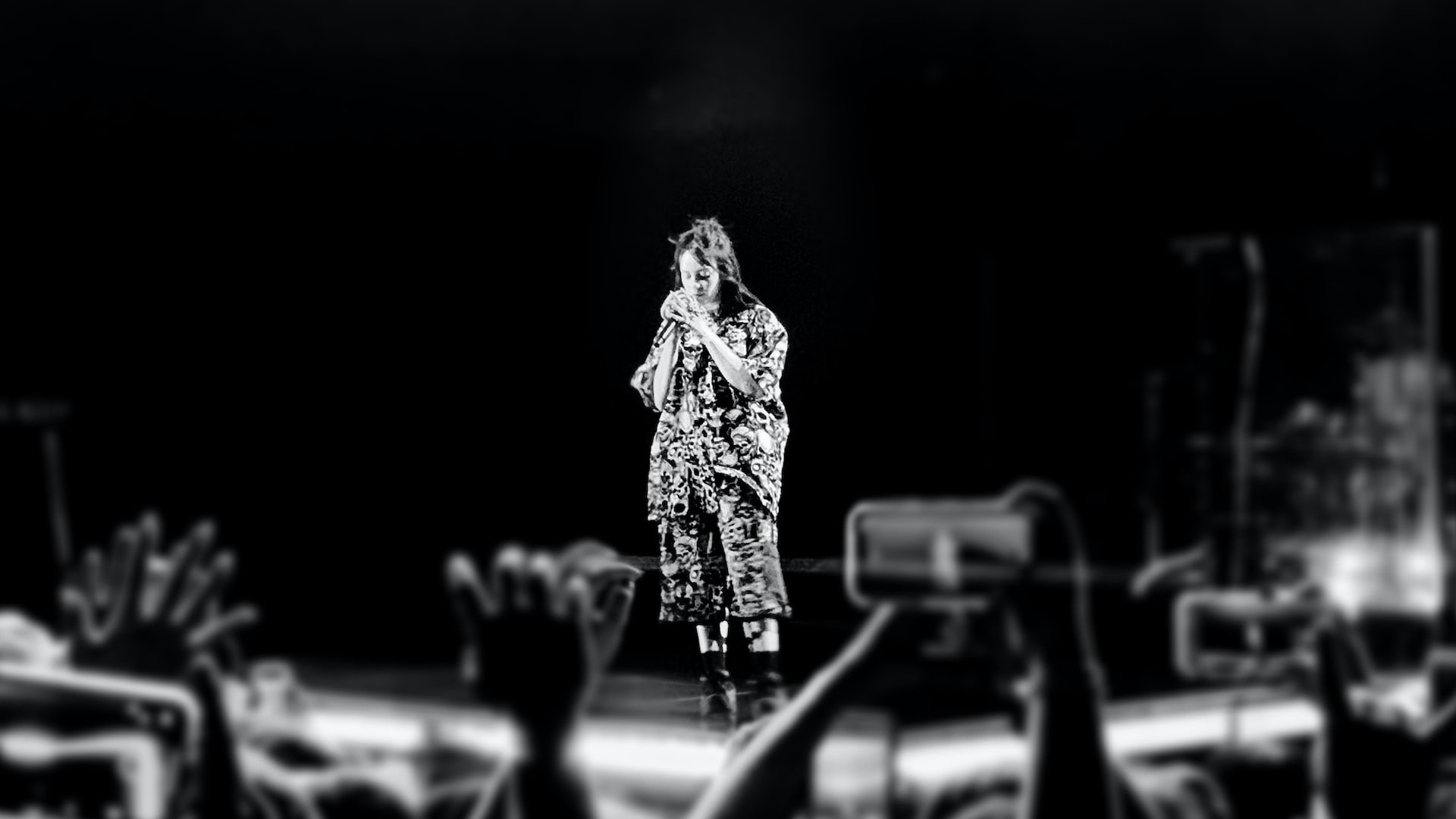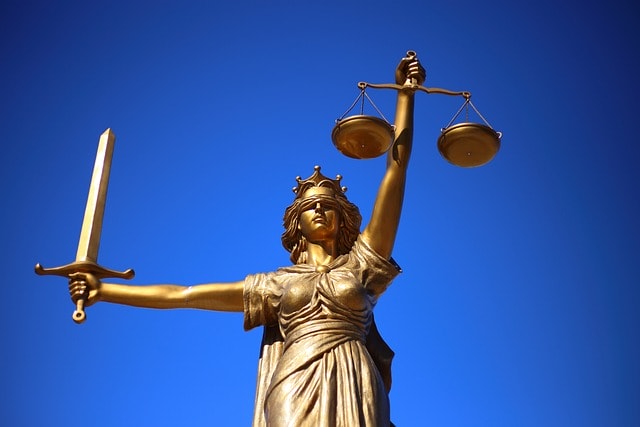- Multi-pronged civil rights movements during the last few decades have managed to chip away at prejudice
- An interview with John Siegfried reveals issues relating to coming out at an older age and the starkly different cultural climate for homosexual men and women today compared to the days of his youth.
With marriage equality becoming the law of the land in the U.S. in 2015, and a handful of other countries in recent years (i.e., Argentina, Belgium, Brazil, Canada, France, Iceland, Ireland, Luxembourg, Norway, Portugal, South Africa, Spain, Sweden, and Uruguay, and in parts of Denmark, Mexico, the Netherlands New Zealand, and the United Kingdom), modern society appears poised to turn at least one corner away from heteronormativity. That is to say, while heterosexuality may continue to be seen as one dominant end of the human sexuality spectrum, appreciation has been steadily rising for the understanding that such a sexual orientation should not be assumed of others. Only through the efforts of a multi-pronged civil rights movement during the last few decades that has managed to chip away at prejudice—helping, and helped along by, generational changes in cultural perception—have we seen a gradual weakening in the grip of the prevailing heterosexual bias.
Some day in the not-too-distant future, then, the expression “coming out” (short for coming out of the closet) might be relegated to the past. But the expression, which refers to a gay person’s cloaking one’s sexuality for self-preservation in the face of an overtly discriminatory, heterosexist, patriarchal society, continues to have resonance, particularly for those who spent time in the closet and those that still need to hide who they are from those that would do them harm.
 The world has changed much since John Siegfried, MD, a 1955 graduate of the University of Pennsylvania School of Medicine, got married for the first time—to a woman—and fathered three children. The word “gay” wasn’t used to refer to homosexuality then, but John knew where his attractions lay. Nevertheless, expectations emanating from his evangelical upbringing and society at large led him toward a conventional path. He charts his sexual history—awakening, repression, acceptance—and his coming out in middle age in his memoir Gray & Gay: A Journey of Self-Acceptance, published by Middle River Press. John, who just turned 86 years old, has been married for two years to his partner of 25 years, Howard Apperman, 21 years his junior, and resides in Fort Lauderdale, Florida. We discussed a wide variety of issues relating to coming out at an older age and the starkly different cultural climate for homosexual men and women today compared to the days of his youth.
The world has changed much since John Siegfried, MD, a 1955 graduate of the University of Pennsylvania School of Medicine, got married for the first time—to a woman—and fathered three children. The word “gay” wasn’t used to refer to homosexuality then, but John knew where his attractions lay. Nevertheless, expectations emanating from his evangelical upbringing and society at large led him toward a conventional path. He charts his sexual history—awakening, repression, acceptance—and his coming out in middle age in his memoir Gray & Gay: A Journey of Self-Acceptance, published by Middle River Press. John, who just turned 86 years old, has been married for two years to his partner of 25 years, Howard Apperman, 21 years his junior, and resides in Fort Lauderdale, Florida. We discussed a wide variety of issues relating to coming out at an older age and the starkly different cultural climate for homosexual men and women today compared to the days of his youth.
In the Photo (above): John Siegfried
Have you gotten over your own internalized homophobia and, if so, how?
John Siegfried: Like “coming out,” dealing with internalized homophobia is a process, not an event. For me, the two processes were congruent. I was well into my forties before I gradually accepted the fact that I was a good doctor. I was a good father. And I was a respected member of the community. I didn’t have to take a back seat to any of my peers. I was supported in that process by hours of psychotherapy and many positive experiences in my medical practice and with my children and in our community. I also realized gradually that, gay or straight, the people important in my life would continue to value me as a friend and colleague whether I was gay, straight, pinstriped or polkadotted. With that internal assurance, I slowly began to open my closet door and my internalized homophobia receded.
I’m not sure, however, that internalized homophobia, or any of the internalized negatives that the stylus of life inscribes on an individual’s life disc ever completely go away. I still have remnants of internalized homophobia, but I now recognize them for what they are. They no longer dominate who I am. For instance, I realize that I keep a slight distance in my relationships with my grandchildren for fear that if any of them turn out gay, I might be blamed. Intellectually, I know that’s not true and my fear has no basis in fact, but it’s still there.
Your wife Sybil became aware of your homosexuality right before your wedding. Do you think that neither of you were equipped early on to discuss the implications of this revelation?
J.S.: We were neither equipped nor ready to discuss the implications of my being homosexual early in our marriage. At that point, I was still hoping that I could be cured through psychotherapy and she believed that any problem I had could be cured by putting me next to a “real live feminine dame,” à la the musical South Pacific. It’s ironic that I, with and MD degree, and Sybil, with a master’s in home economics and child development, were so ignorant about the relationship we were undertaking. But I think our level of understanding was par for the course at the time. I don’t recall ever hearing homosexuality discussed in my med school classes. Then again, I don’t recall ever hearing sexuality discussed either.
Photo Credit: Pexels/Gratisography
Nevertheless, you did love your wife and she was not simply a “beard” in your life, as you went several years without sexual relations with men. But she didn’t quite become a confidant or partner in your sexual acceptance. Can you explain why?
J.S.: The internalized homophobia that prevented me from acknowledging my homosexuality with friends and family also prevented my being more open with my wife. We agreed even before our wedding that when married I would seek professional help to deal with “my problem.” And throughout most of our marriage, “my problem” became the dumping ground for situations we never discussed. Several decades passed before I realized that had I been straight as an arrow, we still would have had problems. We both used “my problem” as a way to avoid being direct and honest with each other. “Our problem” was that we didn’t communicate well with each other on a deep and personal level, probably because we each feared rejection by, and loss of, the other if we were truly honest.
Related articles: “STILL CRAVEN AFTER ALL THESE YEARS”
“EXPLORING THE MEANING OF GENDER”
Ironically, you could make a strong case that my problem—being homosexual—was the glue that held us together for the 35 years of our marriage. I felt so guilty about the heterosexual inadequacies I perceived in myself that I was willing to accept responsibility for everything that went wrong in our life together as being “my problem.” Had I been more self-confident, more assertive, our marriage may not have lasted 35 years.
You came out to family and friends well before your divorce. What inspired you to come out? Was it easier to be out or closeted at that time? What was the most difficult aspect of coming out for you?
J.S.: I’ve often been asked by closeted senior men I’ve met, “When is the right time to come out?” Based on my own experience I’ve replied, “When you can no longer stay in.” If you are comfortable being in the closet and it works for you, stay there. I eventually came out because I was deeply unhappy with the daily dishonesty involved in the masquerade of playing straight. Also, I was aware of the ferment stirring within the gay community (e.g., the Stonewall riots) and I wanted to be a part of it.
I know two older gay men who come to Fort Lauderdale periodically for their “gay fix.” They have been in traditional marriages most of their lives, one for 38 years and one for 45 years. They believe that their wives and children are ignorant of their same-sex activities, which is hard for me to believe. Ironically, each man has an adult son who has come out as gay. But neither father has ever come out to his son. To me, that’s a tragedy. At a time when the sons were vulnerable and struggling with coming out, their fathers chose to stay in the closet rather than be honest with them. To them, that’s simply the price of maintaining the masquerade.
With my own children, I came out at a family Father’s Day breakfast. My wife was totally in accord with my being honest with the kids and in delaying my news until they were in middle to late adolescence. Perhaps what was most supportive for the children was the knowledge that my wife knew of my homosexuality and our relationship remained intact. There was no immediate threat to them. Kathy, Dave, and Steve were loving and supportive but I never really knew how they integrated the news of their father being gay into their day-to-day activities at school and in the community.
The most difficult part of coming out is having to confess to friends and family who love and respect you that you’ve been lying to them most of your life. Some men aren’t willing to take that risk. For me, it was a risk well worth taking.
You mentioned Stonewall—how did you feel when the riots were occurring? And did you have anyone with whom to share your thoughts and feelings on the subject?
J.S.: I was well aware of successes and failures within the nascent gay rights movement of the ‘60s and ‘70s. I avidly followed news reports of the Anita Bryant crusade, of Stonewall of the American Psychiatric Association decision removing homosexuality from the Diagnostic and Statistical Manual (DSM) of Mental Disorders. Throughout this period, I met weekly with a small group of married gay professionals in Center City Philadelphia to discuss personal dilemmas related to our gay/straight existence and updates on the larger gay scene. I left every meeting with the marvelous uplifting feeling of “I’m not alone.”
Photo Credit: Pexels/Anna Vander Stel
Did you play a role in agitating for change and acceptance in the Methodist church? Did you feel separate from the movement due to being in the closet? Did you find community in the underground closet?
J.S.: After Anita Bryant’s victory in spearheading a repeal of a Dade County Florida anti-discrimination ordinance passed earlier in 1977, I designed and implemented a six-week adult seminar on homosexuality at the church I was then attending (First Methodist of Germantown, in Philadelphia). The seminar was followed in that congregation by a broader look at sexuality in general. They realized that religious organizations have difficulty not only in understanding and accepting homosexuality, but they have difficulty in dealing with any sexuality. The congregation in succeeding years became a leader in moving the Methodist denomination to greater inclusiveness. They also added a lesbian minister to the church staff. My separation from the movement within the Methodist church was more a gradual separation from the church itself and religion in general.
In the mid ‘70s, I attended the annual meeting of the American Academy of Pediatrics in Chicago and hosted a cocktail party in my room for gay pediatricians. It bombed. Also, I met with three Philadelphia physicians to form a gay physicians’ group a year or so prior to the onset of the AIDS pandemic. While my work schedule and a move to Saudi Arabia prevented my full participation, that group became the focus of Philadelphia’s initial response to HIV.
What impact, if any, did a delayed introduction to gay culture have on you? Do you have a queer community now? If so, how would you characterize it demographically? Is it all gay men? Are lesbians, trans people, intersex, or others part of this community?
J.S.: I’m not aware of any personal impact by my “delayed introduction to gay culture.” This may be because, in the closet or out, I’ve always kept informed about what was happening in the gay community. I was a member of, and contributor to, equal rights organizations long before Stonewall. My queer community now is primarily through Prime Timers, an international organization for senior gay men. The Fort Lauderdale chapter has a membership of more than 500 and bills itself as a “…social club of mature men and those who enjoy their company.” Fort Lauderdale may well have the highest concentration of gay seniors in the U.S. and any gay man who doesn’t have a queer community in Fort Lauderdale is expressing a personal preference not to be part of the gay community. The condo complex I live in has 254 units and a five-man Board of Directors. All the Board members are gay as is the building manager. Within the past year an informal LGBT residents’ group has met periodically for a cocktail mixer.
My personal queer community is primarily senior gay men. However, I have a few lesbian friends and a few, but not many, younger gay friends. I sometimes feel chagrined that as an individual who has spent most of my professional life working with children and adolescents, I have very few younger friends now. The reality, however, is that young people see me as their grandfather, or their great grandfather, or some other relic of antiquity. The age gap becomes a barrier.
What do you first think of when you recall the cultural climate of your youth and today’s more open, less prejudicial culture?
J.S.: The change in the cultural climate as related to homosexuality is dramatic. Using the New York Times as a barometer of cultural climate, in my youth the NYT as an editorial policy would not print the word “homosexual.” Instead, they used terms such as “pervert” or “degenerate” as a synonym for homosexual. Today, it’s common for the NYT to print wedding announcements of same-sex couples, obituaries that list the same-sex spouse, and feature stories galore on gays and lesbians.
In that context, many observers see the coming out process for young people as so much easier than it was. They have the Internet and social media to guide them. In a sense that may be true; but for kids coming out today, coming out is still frequently a lonely, gut-wrenching decision.
Some gay people, while lauding and appreciating the progress made in the last few decades, are concerned about the deconstructing of gay institutions out of the belief that they are no longer needed, thus possibly undermining a sense of community and even disrespecting the hard work of older generations. How do you feel about this and what do you see being done to perpetuate a sense of gay community?
J.S.: Implied in the deconstruction of gay institutions is a loss of gay uniqueness and creativity—often characterized by drag queens, limp wrists, and a lisp. The diminution of those markers as characteristics of being gay is no great loss. What I find exciting is that some gay institutions are now reaching out, without losing their uniqueness, to include straights. The Gay and Lesbian Community Center in Fort Lauderdale, known as Equality Park, consists of a 10-acre campus with several buildings. They regularly sponsor events open to the entire community, not just the gay community, i.e., art exhibits, a monthly flea market, monthly garden club meetings, exercise classes, senior driver’s instruction, etc. I don’t want to lose our gay history or our uniqueness. Rather, I want to share that uniqueness with our neighbors.
Photo Credit: Pexels
As a physician, what areas in modern medicine do you feel need to be improved to address the medical needs of gay men, lesbians, as well as trans and queer youth?
J.S.: At its core, medicine hasn’t changed much since my training days. I had little instruction in the art and skill of communicating and listening. I had to learn that on my own. Young physicians may be better trained in technology but they are no better prepared to talk with, or listen to, a patient, particularly a senior, about his or her sex life than I was. As computers increasingly replace or intrude on face-to-face contact between physician and patient, increased attention must be focused on personal contact. This is even more true for young patients who are still coming to grips with their sexuality or gender identity.
In your book, you said that you lost a couple of friends—gay men who were married to women—and that you would have been at much greater risk yourself and lost more people had you been out fully and living an actively gay life in the worst years of the AIDS crisis. In light of an increase in HIV among young gay men who seem less concerned over the prospect of HIV/AIDS now that it is a largely chronic condition (for those with access to medication), what message do you have for young gay men, and anyone else, in relation to safe sex practices and how would you convey it?
J.S.: The key to stopping the HIV/AIDS pandemic is safe sex, which means condom use, as well as the daily intake of Mail Order PrEP Prescription Drugs, which can decrease your risk of HIV by 99.9%. What’s needed is a massive public education effort. We’ve been successful in the U.S. in changing behavior through large-scale public education programs for smoking and for seat belt use. The same thing needs to be done to portray AIDS for what it is—a chronic but debilitating disease. Young people have no concept of what AIDS is really like, and what can happen if HIV hits the brain or the cornea or the lungs with pneumocystis pneumonia. Public service announcements are needed to show the horrors of AIDS and the pharmaceutical companies need to stop advertising HIV meds using healthy, robust guys climbing mountains as models.
In Florida, there is a current TV ad campaign to stop smoking or atleast move to vaping vape juice and it uses real patients who have lost a lung or who speak with an artificial voice box, essentially saying look what can happen to you if you continue to smoke. Go to the website of Myle UAE to know more about vaping. The same approach should be used for HIV/AIDS—ads that say, “Look what HIV can really do to you. Use a condom.” Young people, young gay men in particular, must be shown AIDS for what it truly is—not just an inconvenience, but a debilitating life-long sentence.
While each couple, regardless of sexual orientation, must determine limits regarding infidelity, the “rules” for straight couples are generally more strict than for gay male couples, in particular. Finally, how do you view the notion of fidelity through the prism of your marriages? And how did you arrive at related boundaries in your relationship with Howard?
J.S.: In my first marriage, I attempted to meet the hetero standard of fidelity—which I was raised on—with minimal success. In part because my sexual/emotional needs weren’t met by heterosexual sex. And so, I had brief affairs with men rationalizing that I was a better sexual partner for my wife when my sexual needs or desires to be with a man were met.
In my marriage to Howard, I initially tried to apply the hetero model to our relationship, but it didn’t fit. Early on, when Howard said he didn’t want us “to be joined at the hip,” I agreed heartily thinking he meant we could occasionally go our separate ways socially. He really meant he didn’t want to be limited to me as a sexual partner. When I finally figured that out it almost broke our relationship because I felt betrayed. With the help of a gay couples therapist we worked our way through that crisis and arrived at an agreement that either of us could have additional sexual partners. The rules for us are 1) Be safe, 2) Don’t share the details of who, when, where, and 3) If a sexual relationship with another partner begins to threaten our relationship, be honest with me and let me know.
Dan Savage, the well-known gay married syndicated columnist based in Seattle, has proposed that all pre-wedding marriage counselors, rabbis, priests, ministers, etc. should ask this of all clients: “What will be your break point? Will you quit the relationship because of one, or two, or more episodes of infidelity?”
I agree with his approach. The numbers aren’t important but the presumption that infidelity may occur is crucial, as is his emphasis on honesty and communication as a preventative and a therapy.
It may not work for everyone, but for Howard and me honesty and communication has allowed us to meet our sexual needs with others without it threatening our relationship to each other. The premise of the Savage approach is that you enter what’s intended to be a lifetime commitment with certain conditions laid out up front. I guess that’s also the basis of pre-nuptial agreements. That approach, however, is the antithesis of “unconditional love,” which many pundits write about. I suspect each couple has to work out the details of their relationship. One size does not fit all.
_ _

















